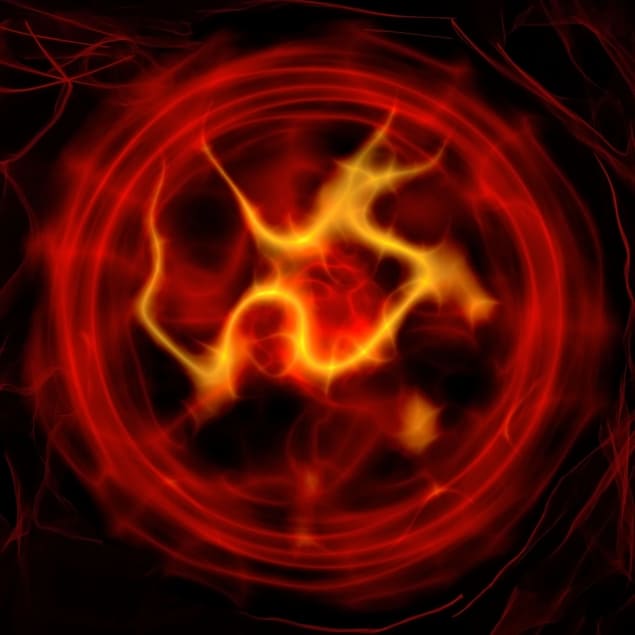Physicists spot the signatures of nuclear fusion in a table-top device
16 Apr 2019
Neutrons characteristic of nuclear fusion have been produced sustainably inside a device that is small enough to fit on a tabletop. Yue Zhang at the University of Washington and colleagues observed the neutrons following efforts to stabilize the accelerated plasma contained within a Z-pinch, a device that for decades has been used by astronomers to recreate the hot plasmas typical of a stellar interior. The new work offers a potential route towards compact fusion-energy generators, as an alternative to large-scale, tokamak-based devices.
A Z-pinch device works by running a strong current along a tube of accelerated plasma, inducing a Lorentz force that generates a strong magnetic field within the plasma. This field “pinches” the plasma by bringing particles closer together – increasing its pressure, and therefore, its temperature.
Physicists discovered in the 1950s that high-energy neutrons are generated in this process, and these neutrons could only have formed as a result of nuclear fusion. Initially, these observations raised hopes that the Z-pinch could be used as a highly compact fusion-energy generator, triggering numerous theoretical studies to understand the processes and conditions for fusion. However, unlike large tokamak devices – which can stabilize plasmas using strong magnetic fields – physicists haven’t yet managed to achieve the parameters that theorists say are necessary a create a stable plasma inside a Z-pinch.
For the first time, these parameters satisfied the conditions that theorists predict should allow nuclear fusion within a Z-pinch. FuZE was able to sustain a stable plasma for 16 µs, some 5000 times longer than the times achieved in static plasmas outside of a Z-pinch. To confirm that fusion had been achieved, Zhang and colleagues measured their plasma’s neutron yield using a plastic scintillator, which converts incident neutrons into photons, coupled to a photomultiplier. The setup revealed that a period of quasi-steady-state neutron production endured for around 5 µs during the time that a stable plasma was maintained.Zhang’s team now aim to address these issues using the Fusion Z-pinch Experiment (FuZE). At just 1.5 metres in length, the cylindrical instrument is a modification to conventional Z-pinch devices, designed to stabilize plasmas by subjecting them to a radial shear force acting around its axis. Within FuZE, the physicists introduced a radially-sheared plasma composed of 20% deuterium and 80% hydrogen, subjected to a current of 200 kA.
Zhang’s team acknowledges that there is a very long way to go before they can realistically consider using a device based on FuZE as a fusion generator. However, their initial results show for the first time that devices that enable sustained nuclear fusion need not take up huge amounts of space.
19/4/2019 FROM PHYSICSWORLD.COM

Δεν υπάρχουν σχόλια:
Δημοσίευση σχολίου